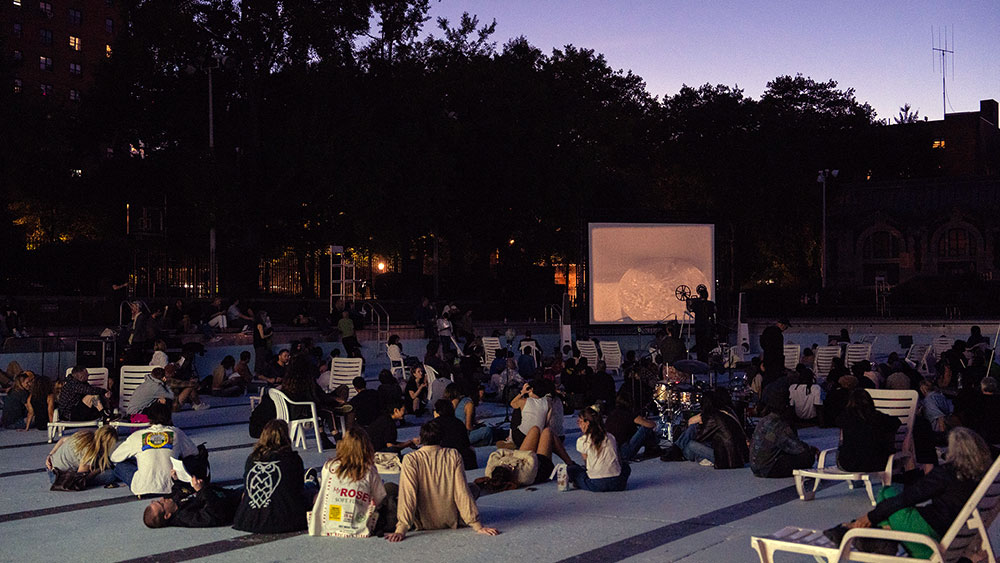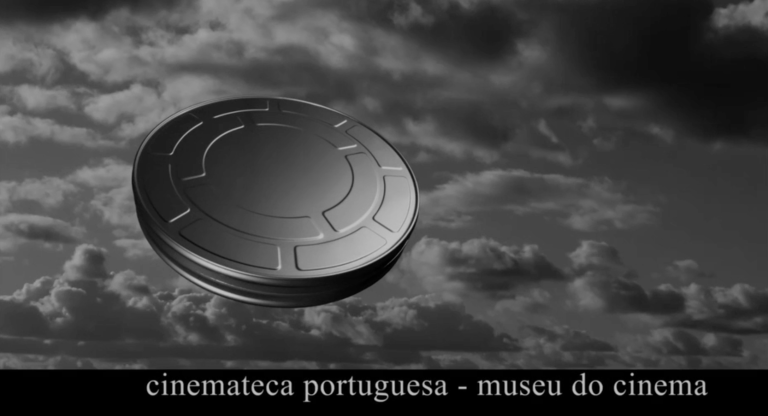The willingness to attend a screening where there is no option but to sit on the floor not only reflects a filmgoer’s commitment to watching films outside of their comfort zone, but is commensurate with their readiness to embrace new films and ways of filmgoing. At the most recent iteration of the Ditcher’s Eddy film series, I was lucky enough to snag a seat on a foldable chair before the backroom of Kaleidoscope Studios became crowded with attendees, most of whom ended up sitting on the floor. The experience made me think back to a screening of Horacio Maldonado and Gustavo Coya’s Somebody is Watching You (1988) I attended in the summer of 2020.
The screening was organized by Spectacle Theater and hosted at Rubulad, an artspace in Bushwick that evokes the spirit of Lewis Carroll’s Alice in Wonderland with the kooky, mismatched furniture that occupies its garden. Although the screening was meant to take place outdoors, it had to be moved inside due to sudden rainfall. The shift in accommodations—from outside benches to inside floorspace—became more than a negotiation of comfort, it entailed a re-adjustment in perspective. The film, which is slippery by design and unassumingly moves from the language of a slasher film to that of a schlocky sci-fi flick, was already difficult to follow. As such, switching places midway through the film—one that delights in shuffling around its many moving pieces—felt right. Suddenly, and despite the programmers’ intentions, the move aligned the attendees, or at least me, with the film’s anarchy.
Anarchy does not befit the Ditcher’s Eddy program I attended, which improved upon the last on curatorial and logistical bases. This time around, VLC didn’t snap and the screening started on time, prefaced by a delicious pig roast organized by Ella Sinskey and her co-organizers. The films in the program were funny, which is somewhat atypical for a short film program these days. While sitting in Kaleidoscope’s studio-cum-makeshift cinema with a rather young audience, it struck me that I was at a different kind of screening than the ones I usually attend. This was not because of the pig roast or the somewhat unfamiliar crowd, but because of the observable dynamic between the audience and the screen. While young filmgoers are certainly at repertory cinemas everywhere these days—myself included—they are often there with a mission: catching up on the canon, accompanying a friend, or having a laugh. At Kaleidoscope, where a batch of mostly new films was being presented for the first time before an audience with no preconceptions or history to inform their reception of the films, a genuine viewing was playing out: the laughter was fitful, not planned; plaudits were immediate, not overdrawn; viewers were fidgety, not sedate.
Whether or not the short films that screened that night have a life beyond their hard-drives is not entirely important to me. What I find valuable is that their presentation confirms what is attractive to young filmgoers and filmmakers when it comes to questions of form and genre. The fact that the audience that night found a kid’s tv-spoof titled When Jacob Jinkers Came to Town (2024) hilarious but was more hesitant to laugh at some of the darker comedy in Jonah Bergman’s Conversations with a Monster (2024)—a film about a washed-up Frankenstein impersonator—confirms that referential humor still has an edge on more original creations. On the other hand, the audience’s heightened focus to films that were willing to experiment with different formats and unconventional ways of arranging a narrative compared to their slumping throughout more traditional films gestures at a growing comfort (and excitement) about the inclusion of experimental filmmaking techniques in new productions. One independent screening is a negligible sample by which to make claims about the future of cinema, but I am adamant that the viewing responses exhibited that night correspond to the taste of a generation that grew up with access to all sorts of media and who are in constant contact with content that is riffing off each other, whether that be in the increase of citational practices in literature, the remix culture of TikTok and Instagram, or the uptick in commentary videos meant to involve everyone in faddish discourses. Observing the interaction between a frame and those sitting on the floor beneath it, who must exert more control over their bodies to stay alert and comfortable while watching a set of films, illuminates what draws their eyes in and what dispels their gaze.
At one of the most remarkable screenings I have attended in recent memory, a collaboration between the Public Art Fund and the Film-Maker’s Cooperative titled “No Swimsuit Required,” guests were invited to sit inside and alongside the rim of an Olympic-size swimming pool in Hamilton Fish Park. With three giant screens at the pool’s extremes, the organizers staged an expanded cinema performance whereby guests became drowned out by the images and sounds emanating around them. They carried this out in flawless fashion, engaging viewers in an active game of shifting perspectives. Perhaps the sensation can be likened to that of a fish caught in a bowl, taken by sudden glimpses of the world beyond its borders. What occurs is a frazzling of attention, an overwhelming viewing experience that demands the viewer either keep re-adjusting their attention or settle within their changing environment. The former gets tiresome, whereas the latter agrees with the sit-down mode-of-viewing. The act of sitting on the floor to watch films represents a form of submission; it is a sign of total commitment, of communion with the screen and the environment they are presented in. The charm of the act lies in its unorthodoxy, which humbles viewers by keeping their gaze askew and making them more receptive to images and ideas that might go unnoticed if they were projected under proper conditions. To sit and watch is to admit one’s passion for cinema and let it wash over one’s self.
Feedback Loop is a column by Nicolas Pedrero-Setzer reflecting on each month of repertory filmgoing in New York City.
Photo by Manuel Molina Martagón


